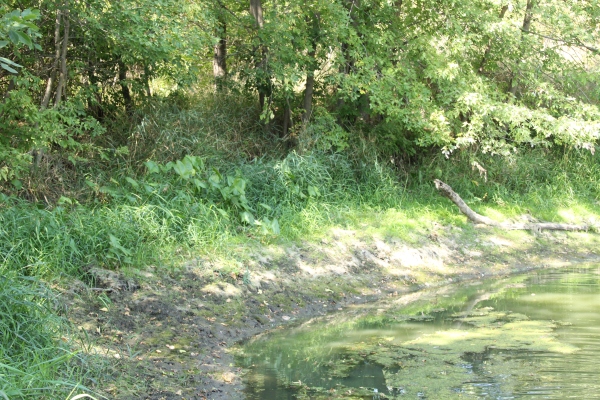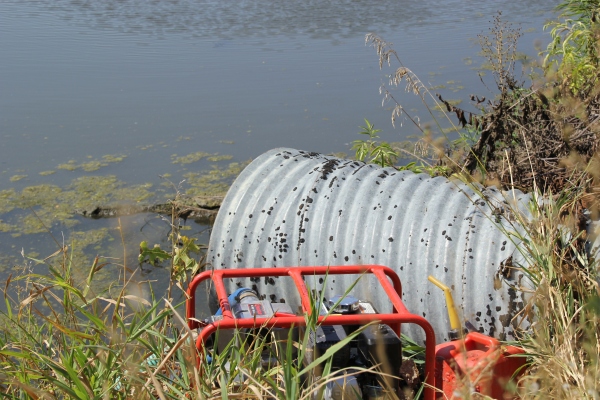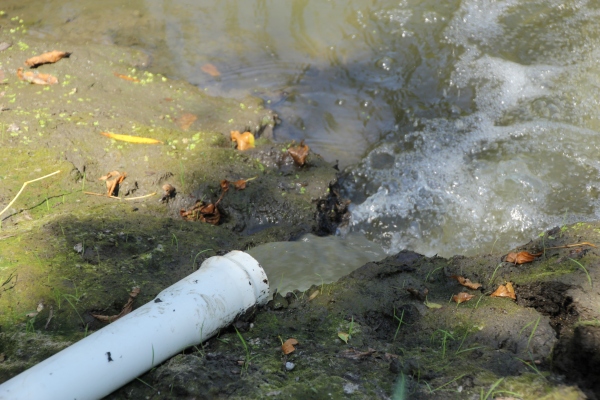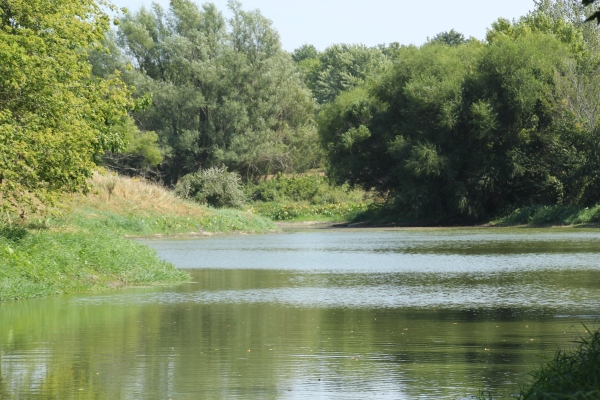- (515) 967-9575
- 237 NE 80th St | Pleasant Hill, IA 50327
For the second year (almost three), we have found ourselves in drought conditions. I thought I’d share with you all the fun that those conditions can bring to a golf course. In case you can’t tell, I’m using the word fun very loosely.
Droughts are definitely good for exposing your weaknesses in irrigation and (possibly) patience with a smidge of lack of sleep. Our family knows that there will definitely be a time when we will be talking about too much water in the near future. It’s the way the story goes.
The last time a drought hit our area was in the 80’s. After experiencing it, our family installed a fairway irrigation system in 1990. Please keep in mind that when our course opened in 1973, we opened with our tees and greens irrigated. The fairway watering was an upgrade that we felt was necessary after going through a drought. Up until the last two years, we haven’t been tested in our abilities to water the golf course in severe drought conditions. Our fairway watering had not been tested to its current degree. For that, I am thankful.
All of our ponds are filled through run off. This works well as long as there is at least some amount of moisture (rain) to run off and fill the ponds up with water. They are also fed through a small unnamed creek bed (currently dried up), however, none of the supply of water comes from a natural spring. In normal years, this doesn’t present a problem because even if we only get one inch of rain in a month, it is enough to feed all of our ponds and replenish the creek bed.
Enter 2013. The last time we got rain was on June 23 which was about eleven weeks ago. Last year, we dredged our ponds to help us retain some additional water. This was successful in that we were able to keep our tees, fairways and greens watered until the last week in August. That was about four weeks longer than we were able to water last year in 2012. In most years, I’d consider that to be a success, however, we clearly need more water.
In the last week of August, we hit our heat wave and that made our job a little more challenging. Once the heat wave hit, we could no longer keep our irrigation pond level steady with what we were taking out vs. what we were putting in. In that last week, our pond level dropped down about two feet.

In order to keep our greens and tees alive, we had to stop watering fairways to conserve water and allow time for us to build up a water supply in our irrigation pond. In the last week, we have starting pumping all of our other ponds dry to fill our irrigation pond. The first pond we pumped dry runs right next to number one’s fairway. This is the same pond where our friendly turtles like to hang out on that branch that is now clearly visible.

After pumping this pond dry, we thought we might have enough water to begin watering fairways again. Before we could make that decision, Jason needed to check the water level in our irrigation pumping pond.
We have two pumps to our irrigation system. One is a jockey pump which can sustain our greens and tees. The other is a big daddy that sucks up lots of water in order to water the 40ish acres we have in fairways. Water levels are really important because you cannot start sucking up mud or you severely damage the pump. Let’s just say, these pumps aren’t something you buy at Menards. You could buy a nice new car or a big daddy pump. Either way, the price would be the same. In other words, we don’t mess around with our big daddy pump.
Unfortunately, the most tried and true method for checking water levels is to get right in there and see what’s going on. Jason is always quick to volunteer the only one crazy enough for the fun jobs around here. He optimistically put on his waders to check things out.

He waded out into our irrigation pond.

Slowly, but surely.

Until he got to our intake valve. It was about this time, that the waders were of no use. He was very pleased with his decision to remove his phone from his pocket before tackling this job. He may not look like he’s having fun in this picture, but trust me. He is.

These two intakes valves lead to our irrigation system. The smaller one feeds our jockey pump for greens and tees. The big pump feeds our big daddy which is required for watering fairways.
 He made his way back out of the water. No longer being cautious about staying dry.
He made his way back out of the water. No longer being cautious about staying dry.
 Yep. That’d be water in the waders. Jason has always had a sense for fashion.
Yep. That’d be water in the waders. Jason has always had a sense for fashion.

He determined that we could begin watering our fairways again based on our current water levels. To prevent himself from having to get back in the water tomorrow to check water levels again, he marked the water level. This will show him at a glance if he has taken the pond level down too far overnight. Being highly scientific, it was marked with a nearby stick.
 He gave himself a big pat on the back because that meant that his nightly ritual of pumping water was beginning to pay off! That’s right. Jason hasn’t slept much over the last week because he has been busy pumping water from all of our other water sources in order to fill our irrigation pond. The pump is gas-powered, but only lasts for two hours, so he has to wake every two hours to fill the pump with gas and make sure everything is working properly. As I mentioned earlier, he pumped our pond next to number one fairway dry last week. That hard work has made it so that we will begin watering fairways again. In order to maintain water level, he has also begun pumping all of our other ponds dry.
He gave himself a big pat on the back because that meant that his nightly ritual of pumping water was beginning to pay off! That’s right. Jason hasn’t slept much over the last week because he has been busy pumping water from all of our other water sources in order to fill our irrigation pond. The pump is gas-powered, but only lasts for two hours, so he has to wake every two hours to fill the pump with gas and make sure everything is working properly. As I mentioned earlier, he pumped our pond next to number one fairway dry last week. That hard work has made it so that we will begin watering fairways again. In order to maintain water level, he has also begun pumping all of our other ponds dry.

He is currently working on the pond that runs along the front of number one, nine and the practice green. The pump is located by the culvert.

This hose runs up through the culvert.

Along side the tall grass.
 Up the hill.
Up the hill.
 Then into the irrigation pond.
Then into the irrigation pond.

Filling our irrigation pond with gold water.

This process involves lots of math and calculating. Luckily, my brother, Jason, used to be an air traffic controller and is really good at math. We’ve been figuring how many gallons we will need to water 60 acres (greens, tees, and fairways) with 1/10 of an inch of “rain” each night. Then, we need to figure how many gallons of water we have in each pond based on their acreage and depth. He retired from air traffic control because he thought this job would be fun and less stressful. He’s funny.
In other news, we now know how many gallons fall from the sky when we get an inch of rain. (1 acre) inch = 27 154.2857 US gallons
Because I’m a good sister, I didn’t ask for him to figure out the rate at which we could pump water based on the curvature of the earth.
Does your brain hurt because mine sure does?
Join our Birthday Club to receive free golf! Boo yah!